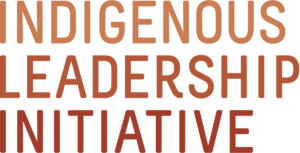Indigenous-led Conservation: IPCAs & Guardians
Indigenous Nations Are Creating a New Model for Conservation
In Canada, the biggest, most ambitious plans for protecting lands are led by Indigenous Nations. These plans are part of the larger movement of Indigenous-led conservation—a movement that is reshaping relationships between Indigenous and Canadian governments and between people and the land.
Conservation on a Grand Scale: Indigenous Protected & Conserved Areas
Many Indigenous Nations are establishing Indigenous Protected and Conserved Areas (IPCA).
IPCAs are identified by Indigenous Nations through extensive community planning.
They elevate Indigenous rights and responsibilities.
And they reflect Indigenous laws and traditional relationships with the land.
Several Indigenous Protected and Conserved Areas (IPCA) have been established since 2018, including:
Edéhzhíe Dehcho Protected Area/National Wildlife Area: 14,249 square kilometres of boreal forest in the Northwest Territories. That’s more than twice the size of Banff National Park.
Thaidene Nëné Indigenous Protected Area: 26,376 square kilometres of forest and tundra in the NWT, making it one of the largest protected areas in North America.
Scores of other Nations are advancing IPCAs. Over 25 proposals were funded by the federal government and more than 20 capacity investments were made in 2019 as part of Canada’s strategy for meeting biodiversity commitments.
The Kaska Dena Council is working to protect the largest intact area in British Columbia—an area the size of Switzerland—to support Kaska culture, create jobs, and shelter threatened species.
In northern Manitoba, four First Nations and their Inuit neighbors are working to protect the Seal River Watershed, a landscape the size of Costa Rica—to ensure the next generation can engage in traditional practices and serve as guardians of the lands and waters.
On-Going Land Stewardship: Indigenous Guardians Programs
Indigenous Guardians help care for lands and waters on behalf of their Nations.
Guardians are trained experts who manage protected areas, restore animals and plants, test water quality, and monitor development.
There are over 70 Guardians program on the ground and 25 more in the design phase.
Research confirms that Guardians programs deliver wide-ranging benefits and return on investment:
A study conducted for the Australian Prime Minister and Cabinet found that every $1 invested in combined Indigenous Ranger and Indigenous protected area programs generates up to $3 in social, economic and cultural benefits.
Guardians in Canada deliver similar results. An analysis of two programs in the NWT found they create about $2.50 of social, economic, cultural and environmental results for every $1 invested.
The demand for Guardians programs continues to grow after initial federal funding:
The 2018 federal budget included an initial investment of $25 million over 5 years to help launch and expand Guardians programs and lay the groundwork for a National Guardians Network.
The number of Guardians programs has nearly tripled since 2016, and demand continues to grow: the initial pilot program was consistently oversubscribed, with applications eclipsing available funds.
A fundamental shift is underway in how Indigenous Nations and Canada work together:
As part of the 2018 funding, the Indigenous Leadership Initiative and ECCC created the First Nations/Federal Pilot Joint Working Group for Guardians including eight Indigenous Knowledge Keepers and four federal representatives.
Rather than having Crown governments design and deliver a program to Indigenous Peoples, this is Indigenous-led and encourages Indigenous and Crown representatives to be partners.
The Joint Working Group has established criteria for future funding to guardian programs, a training framework, and a proposed structure for the national network.
The Joint Working Group was agreed upon as an interim process toward the establishment of the National First Nations Guardians Network.
The Key to Meeting the Goal of Protecting 30% of Lands by 2030
Canada is beginning to catch up with Indigenous ambitions for sustaining lands and waters. The country committed to protecting 30% of lands by 2030 to stem the loss of animal and plant species.
Prime Minister Trudeau and Environment and Climate Change Minister Wilkinson have said repeatedly that partnerships with Indigenous Peoples are essential for meeting Canada’s goal.
In 2019, the federal government funded over 25 IPCAs proposals as part of its plan for honoring biodiversity commitments.
The 2021 federal budget invested $2.3 billion in nature conservation and specifically referenced Guardians and noted that IPCAs are a critical solution for achieving Canada’s target of protecting 25% of lands by 2025.


